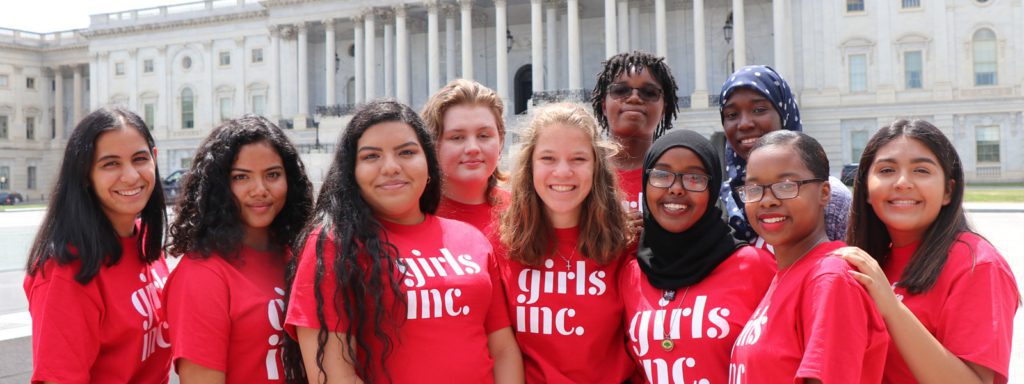The following is a guest blog post from Stephanie J. Hull, president and CEO of Girls Inc., a member of Independent Sector.
As the nation continues to grapple with many of the crises of the past year, addressing systemic racism continues to be front and center for a number of philanthropic organizations in the United States. Some are envisioning massive infusions of funding to support this work.
These commitments are both welcome and, clearly, overdue. Those of us in organizations that work to address the consequences of systemic racism applaud their focus on eradicating racism at its origin: We have long known that it is crucial to get this work done.
It is also crucial to get this work right, and to begin right away, before the window of attention and opportunity closes. Already, some of the home truths of last year’s “racial reckoning” are in danger of fading from view.
So, in the spirit of getting this done and getting it right, three observations:
This systemic problem requires multiple simultaneous systemic solutions. As the work of Isabel Wilkerson and others reminds us, systemic racism is not simply about hatred. In fact, that notion — emotionally gripping as it is — puts the cart before the horse. Systemic racism in the United States has arisen from a fundamental social and economic reliance on the existence of a permanent underclass; in Wilkerson’s words, “Caste is the bones, race is the skin.”
The very fact that we as a nation have known it for so long and still failed to address it demonstrates how deeply our institutions rely on it, and how many roots it has — cultural, economic, political, social. To acknowledge that it is so deeply rooted tends, perversely, to let everyone off the hook. We will gain traction only if we pull together, from all sides at once, with large commitments of resources distributed across sectors and across areas of concern. Youth services, economic capacity building, community organizing, education, public health: every one of these areas, and more, should be involved from the beginning, and every one of them will need unprecedented resources.
Providing support for this broad kind of work challenges funders to engage on multiple fronts. While staying focused on their mission-specific areas of endeavor, they might also be prepared both to fund more than one large-scale effort, and to ensure that any efforts they support are interconnected. To pit organizations, sectors, and agencies against each other would be to ensure failure.
The multiple systemic approaches are most likely to thrive if they’re flexible, transparent partnerships. Even as so many disparate areas are implicated in addressing the problem of systemic racism, they are also deeply intertwined. The youth services sector depends upon education and public health, which contribute to and are shaped by economic capacity building and community organizing, and so on.
None of these sectors should strike out on its own — none has the human or financial capital to break this cycle alone. But even with resources, we need all of these sectors engaged, so that the solution is comprehensive and cohesive rather than disjointed.
Indeed, on a mission of this scale, organizations doing the work will need to share intelligence — both within and beyond their fields — about the obstacles they encounter, the opportunities they discover, the attempts that fail, and the advances that are promising. To learn from each other, they will need authentic, non-competitive partnerships. They will also need to be secure in a large, predictable resource base so that they can share findings with each other without fear of undercutting their own future viability as grantees.
This means that funders would ideally make secure multi-year grants. What’s more, all parties might agree that, in a multi-year arc of work, some organizations will take an occasional step back, or even redirect their efforts based on what they learn — an agreement that requires both flexibility and transparency in achieving grant outcomes. When grantees are secure in being transparent about their work with both funders and partner organizations, accountability will be ensured, and outcomes will be mutually reinforcing.
True support for these many approaches will require a system of systems. What does this mean? Just as systemic racism itself spans many sectors, interests, and centers of power, the effort to address it must do the same. To take on work at this scale, both funders and grantees could benefit by using their convening power as part of the solution. Imagine the possibilities for amplifying solutions to systemic racism if a roundtable of funders making system-scale investments, or a similar multidisciplinary congress of organizations doing the work, met twice a year to exchange information and consider possible avenues of effort.
We are finally talking about the institutions and structures that perpetuate racism. To be beginning this work is historic, by definition extraordinary. If we do it right, then we as a nation, we as organizations, and we as individuals will be helping to lay the groundwork for a new kind of United States. Collaboration is never easy, particularly on so vast a scale and so troubled a ground; to be sure, building the trust that makes good collaboration possible will be fundamental to the work. It will be one of the hardest things any of us has ever done — and potentially one of the most durable.
Stephanie J. Hull, Ph.D., is president and CEO of Girls Inc., a national nonprofit organization that inspires all girls to be strong, smart, and bold, through direct service and advocacy. In 2020, she wrote “Education as Equity” for the Independent Sector blog. Learn about other Independent Sector members and becoming a member.



